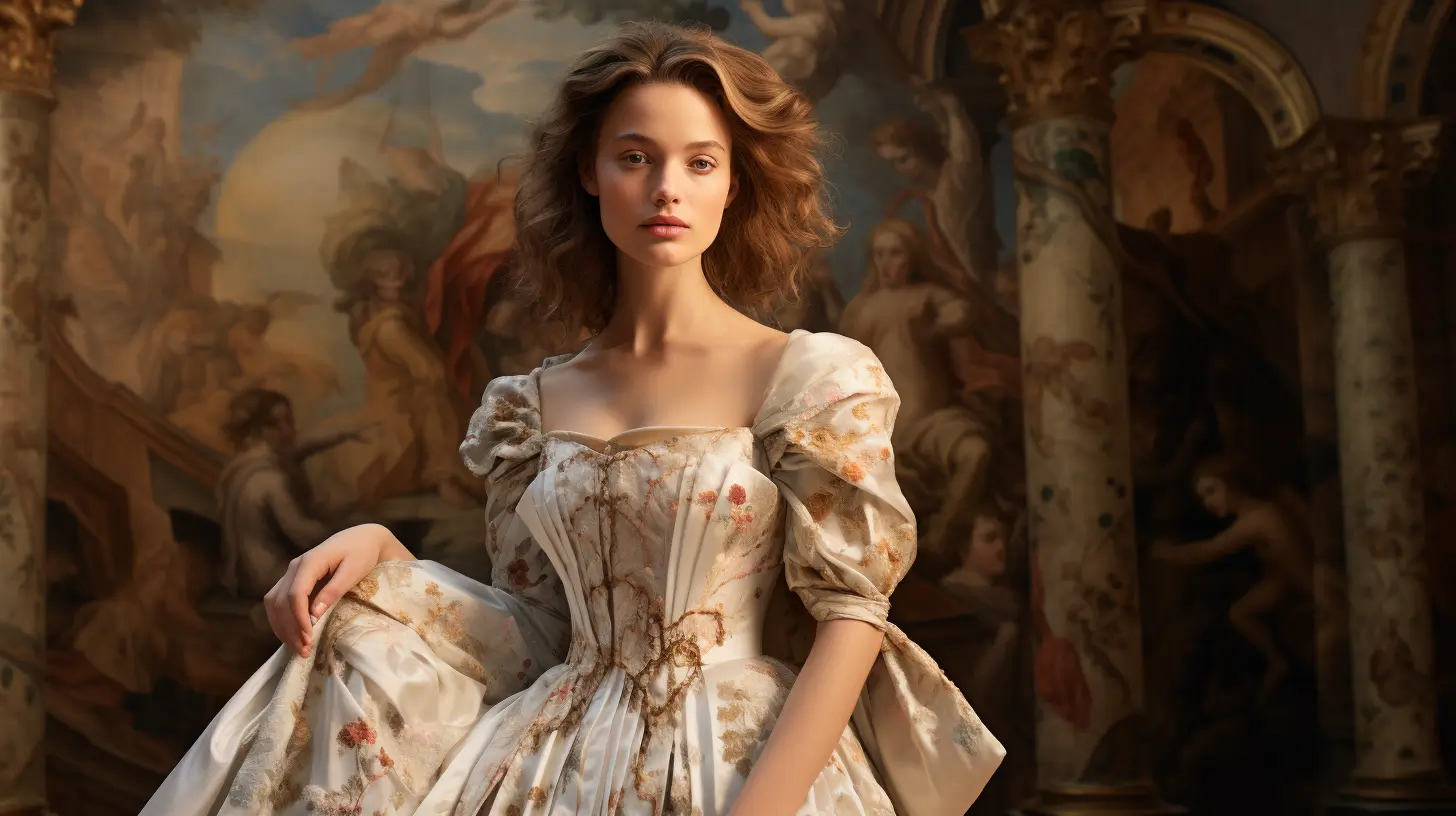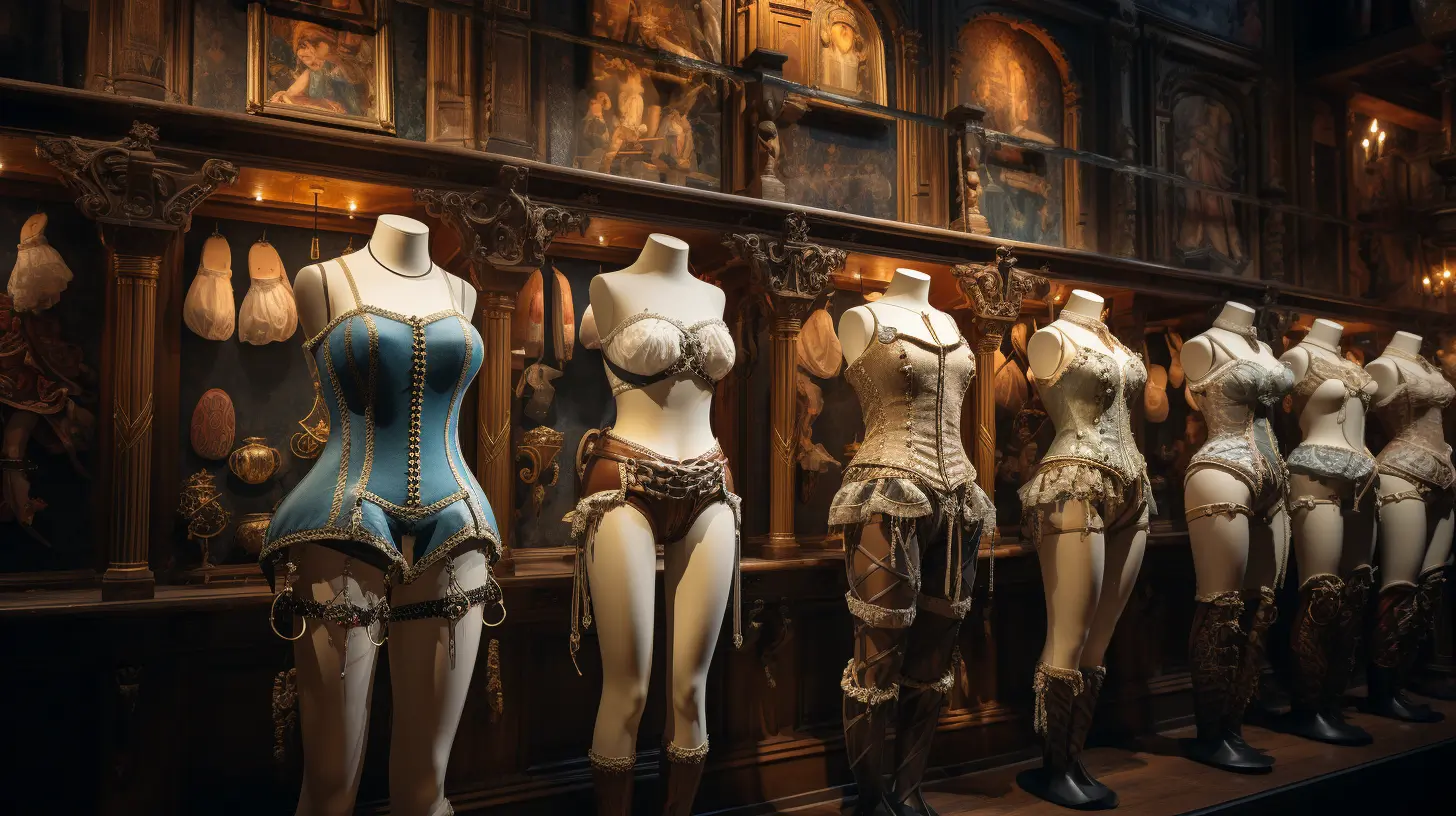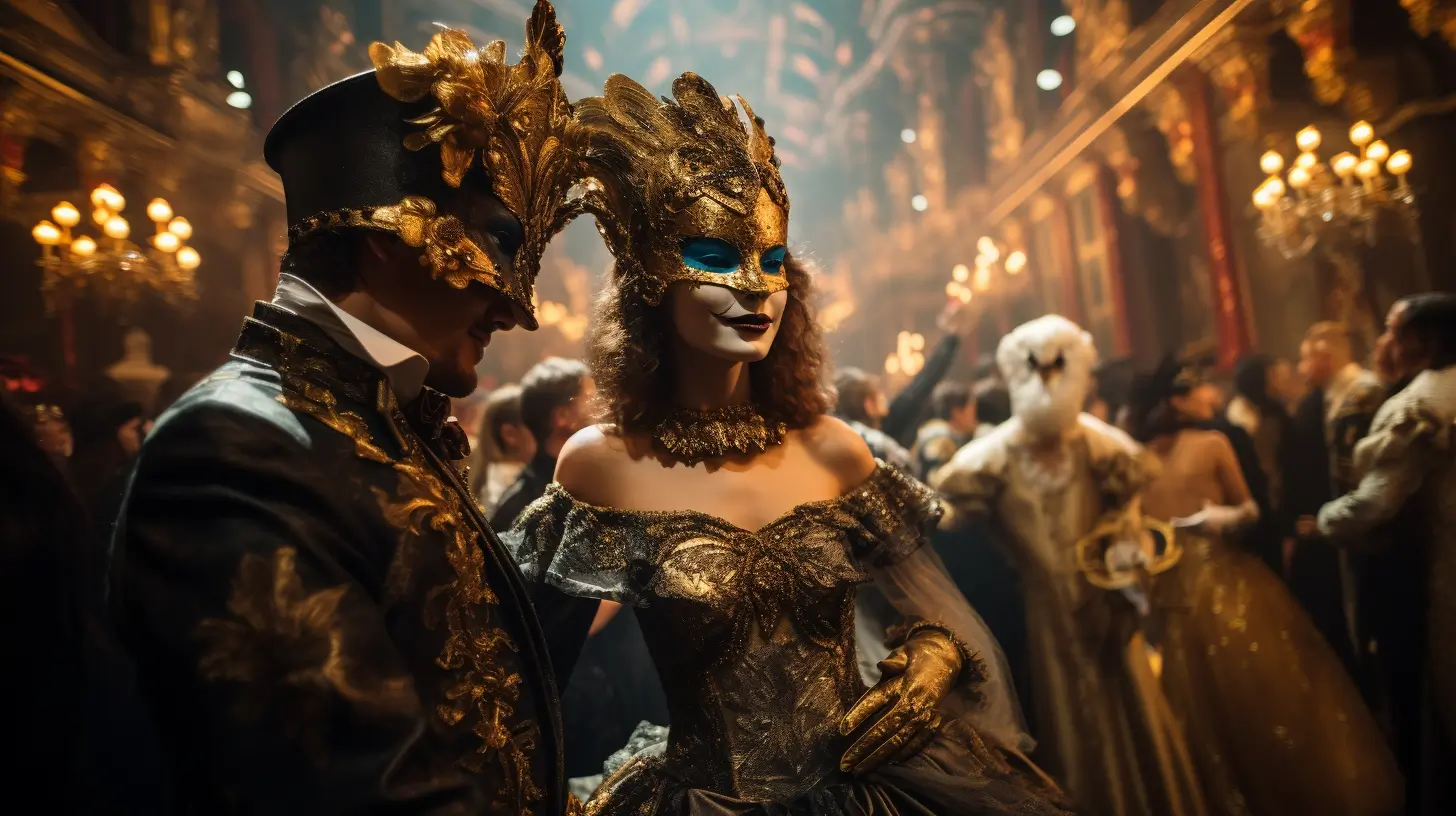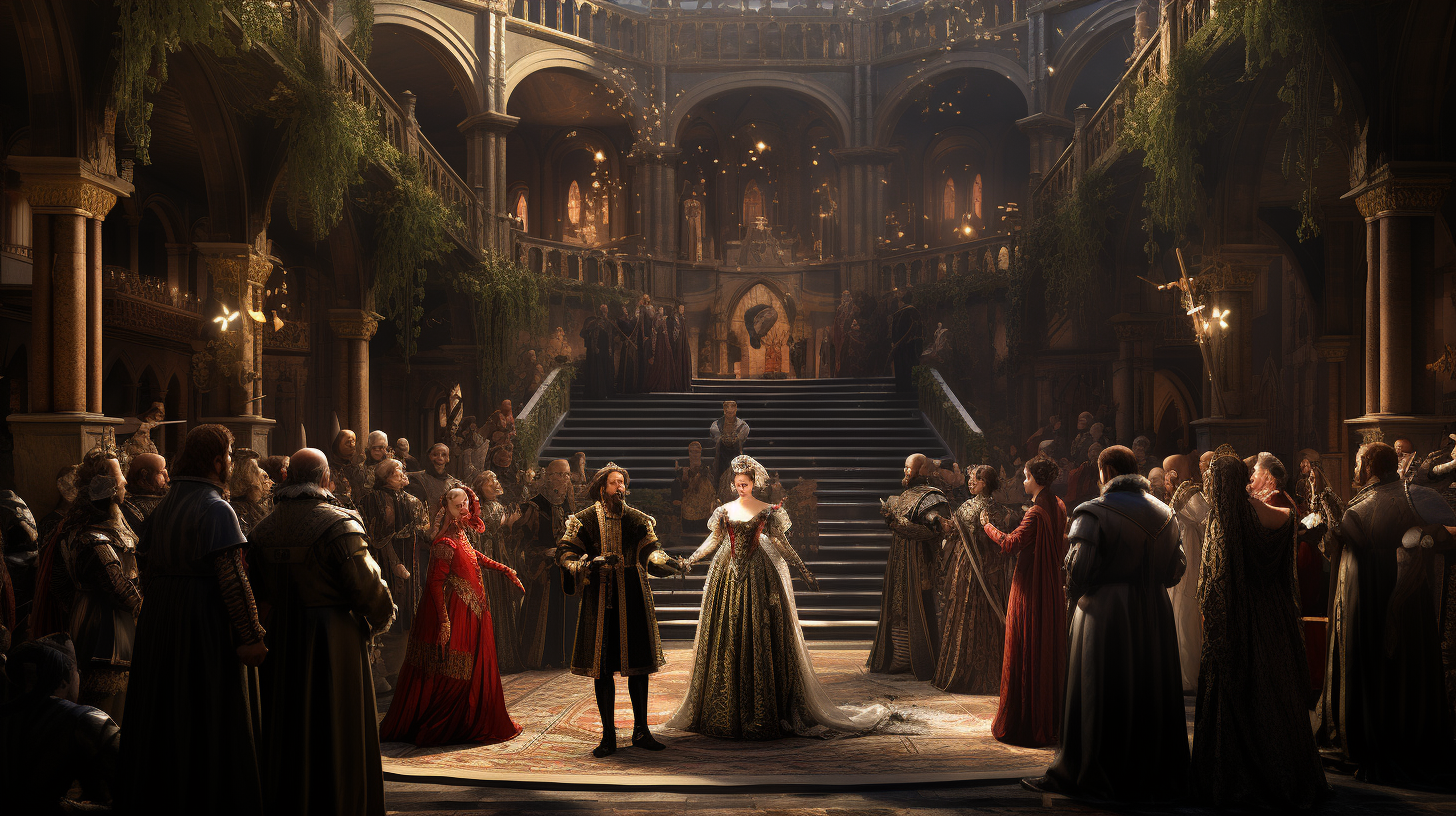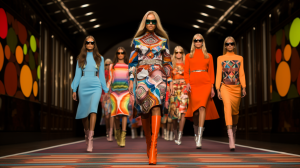
The Beatles to Bell-bottoms: Music’s Influence on 1960s Fashion
Picture this: it’s the 1960s. The world is changing fast – politically, socially, and man, let’s not forget musically. In this whirlwind, music wasn’t just something you tapped your foot to; it was a way to wear your heart on your sleeve, quite literally. Now, when we talk about the 1960s, it’s impossible not to groove to the tunes of The Beatles or sway to the psychedelic rhythms of rock ‘n’ roll. But here’s the kicker – these weren’t just sounds echoing through transistor radios; they were the silent maestros of fashion, shaping threads and trends alike.
Think about it – when you see a mop-top haircut or a sharp, slim-fitting suit, who comes to mind? The Beatles, right? These lads from Liverpool didn’t just give us chart-toppers; they sent shockwaves through the wardrobes of an entire generation. It wasn’t just music; it was a fashion revolution, a visual and auditory feast that blended to create a cultural smorgasbord.
So, let’s take a laid-back stroll down memory lane, where the needle drops on a vinyl might just dictate the cut of your trousers or the pattern on your dress. From the sleek, modish allure of Beatlemania-inspired suits to the flowy, free-spirited flower power aesthetics of the hippie movement, we’re diving deep into the vibrant tapestry of the 1960s – a time when music and fashion danced together, hand in hand, in a kaleidoscope of colors and sounds.
Beatlemania and the Birth of a Fashion Revolution
The Beatles’ Iconic Style
The Beatles, man, they weren’t just a band; they were trendsetters in the truest sense. When these guys stepped onto the scene in the early 60s, they brought with them more than just catchy tunes. They brought a style – a fresh, sharp look that was as much a part of their appeal as their music. Those slim-fitting suits, those neat, collarless jackets – they were the epitome of cool. And let’s not forget the mop-top haircuts, a signature style that became synonymous with the band. It was clean, it was modern, and boy, did it catch on.
Impact on Men’s Fashion
But the influence of The Beatles went beyond just their personal style. They sparked a fashion revolution among young men. All around the world, fellas were ditching the conservative cuts of their dads’ generation for something more alive, more now. It wasn’t just about looking good; it was about feeling good, feeling free. This wasn’t just a shift in fabric and patterns; it was a shift in mindset. The Beatles showed that fashion could be a form of self-expression, a way to connect with the rapidly changing world around you.
From Mod to Psychedelic: The Evolution of Music and Style
The 60s were a time of transformation, man, and nowhere was this more evident than in the shift from Mod to Psychedelic styles. This wasn’t just a change in fashion. It was a change in culture, in music, in attitude. Everything was moving, everything was evolving.
The Mod Movement
In the early part of the decade, the Mod movement was all the rage. Originating from the stylish streets of London, this trend was sleek, polished, and oh-so-cool. Think tailored suits, slim ties, and shiny leather boots. The Mods were sharp, man. They were the embodiment of urban sophistication. And the music? It was all about rhythm and blues, a little jazz, a bit of soul. Bands like The Who and The Small Faces weren’t just making music; they were setting the tempo for a whole fashion scene.
Transition to Psychedelia
But as the decade rolled on, the scene started to shift. The clean lines and tailored fits of the Mod era began to give way to something more fluid, more vibrant. Psychedelia crept into the picture, hand-in-hand with a new kind of music. It was the era of the Beatles’ “Sgt. Pepper,” of Jimi Hendrix, of Janis Joplin. Music was turning into a kaleidoscopic soundscape, and fashion followed suit. Colors exploded into bold, swirling patterns. Clothes became looser, freer. It was a visual trip, a sartorial reflection of the expanding consciousness of the times.
The Hippie Movement: Flower Power and Bell-bottoms
Now, let’s talk about the hippie movement, man. This wasn’t just a fashion trend; it was a lifestyle, a philosophy. The late 60s saw a seismic shift towards peace, love, and harmony, and this ethos was reflected in every stitch of hippie fashion.
Rise of the Hippie Culture
The hippie movement brought with it a sense of liberation that was boldly echoed in its fashion choices. Gone were the days of strict fashion rules. In their place came something organic, flowing, and unapologetically free. We’re talking tie-dye shirts, flowing skirts, bell-bottom jeans, and sandals. It was a style that said, “Hey, I’m here to express myself, and I’m doing it my way.” This fashion was about connecting with the earth, with each other, and with a cause. It was about being comfortable in your skin and with your style.
Fashion as a Statement
And let’s not overlook the symbolism, man. Every paisley pattern, every peace sign, every flower woven into a headband was more than just a fashion statement – it was a statement of values. The clothing of the hippie movement was a colorful rebellion against war, a visual chant for peace, and a banner for love. It was fashion with a purpose, fashion with a message.
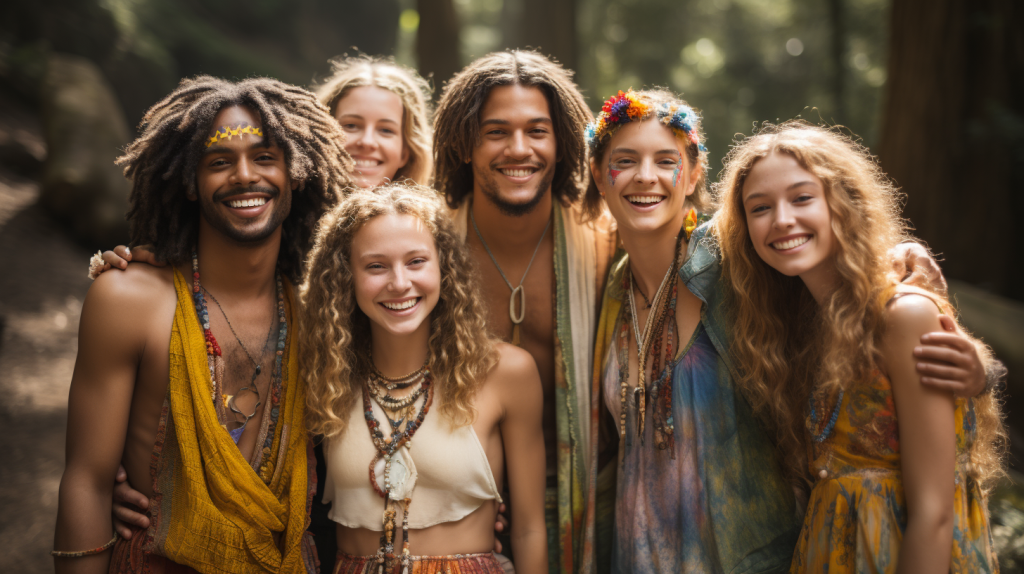
Music Festivals as Fashion Runways
The 1960s, man, were a time when music festivals weren’t just gatherings; they were the birthplaces of fashion trends, where style statements were as loud and clear as the music echoing through the air.
Iconic Music Festivals
Woodstock, Monterey Pop, the Isle of Wight Festival – these weren’t just concerts, they were fashion shows without the catwalks, where the attendees were the models and the fields were their runways. Think about Woodstock, a three-day festival that turned into a fashion capsule of the era. Here, amidst the mud and the rain, amidst the music that would go down in history, was a sea of people who defined what it meant to dress freely, unbound by convention. Bell-bottoms that flared as wide as the smiles, tie-dye shirts that swirled like the dreams of a generation, headbands, and beads that weren’t just accessories but symbols of a movement.
Fashion as Self-Expression
These festivals were more than music; they were gatherings of self-expression. Each outfit was a statement, a declaration of individuality. You could see a guy in a hand-painted vest standing next to someone in a poncho, a girl in a crochet dress spinning next to another in a suede fringe jacket. It was a melting pot of styles, each one telling a story, each one a piece of the larger tapestry of the time.
Lasting Impact
And the influence of these festivals on fashion? Man, it was profound. They were the epitome of the hippie aesthetic, a showcase of styles that would ripple through the decades. Today’s festival fashion – the bohemian rhapsodies, the flower crowns, the resurgence of vintage styles – owes a lot to those 1960s fields. They were where fashion became synonymous with freedom, where you dressed not just to impress, but to express.
Music festivals of the 60s did more than just showcase bands; they showcased a movement, a seismic shift in culture and style. They were the places where you could see the future of fashion unfolding in real-time, to the soundtrack of the greatest musicians of the era.
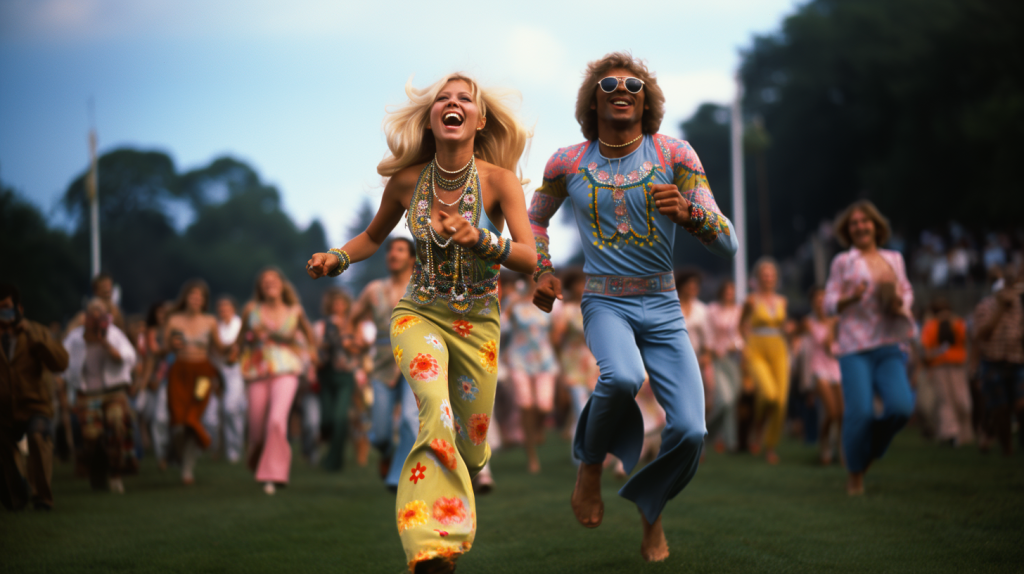
Legacy of the 1960s: Echoes in Modern Fashion
Now, let’s mosey on over to how the 1960s continue to echo in today’s fashion world. It’s like a melody that never really fades, man. The impact of the 60s on modern style is as vivid and lively as it was back in the day.
1960s Fashion in Today’s Wardrobe
Take a look around. The 60s are everywhere, from high fashion runways to the streets. Designers still draw inspiration from this era, reinterpreting its iconic elements with a contemporary twist. Those mini skirts, geometric prints, and even the psychedelic patterns – they all find their way back into our wardrobes, time and again. It’s a testament to the enduring appeal of the 60s style, an era that broke boundaries and set new standards in fashion.
The Beatles and Beyond
And it’s not just the clothes. The spirit of the 60s, that sense of rebellion and freedom, still permeates fashion today. The Beatles, with their groundbreaking style, continue to influence modern men’s fashion, from the cut of a suit to the casual cool of a turtleneck. Then there’s the hippie movement, whose ethos of freedom and love lives on in the bohemian styles that are as popular on today’s streets as they were at Woodstock.
A Cultural Renaissance
The 1960s weren’t just a decade; they were a cultural renaissance that reshaped how we think about fashion. It was a time when style became a language, a way to communicate who you were and what you stood for. Today, when we don flared jeans or a tie-dye shirt, we’re not just making a fashion statement; we’re paying homage to a time when fashion was about breaking free, about making the world a little more vibrant, a little more open, a little more beautiful.
So, there we have it – a trip through the 1960s, a decade that spun the world of fashion on its head. From the sharp, modish allure of The Beatles to the free-spirited, kaleidoscopic whirl of the hippie movement, this era was more than a series of style trends. It was a cultural dialogue, a vibrant conversation between music and fashion, each influencing and shaping the other.
The 1960s showed us that fashion could be more than fabric and thread; it could be a statement, a protest, a voice. The styles born in that tumultuous, vibrant decade still resonate today, echoing through our modern wardrobes and reminding us of a time when fashion was not just about what you wore, but about what you stood for.
As we look back on this iconic era, it’s clear that the 1960s were more than just a decade of change – they were a revolution, a bold and beautiful reimagining of what fashion could be. And in this, we find a timeless message: fashion is not just about trends; it’s about expression, about freedom, about being unapologetically, beautifully yourself.


